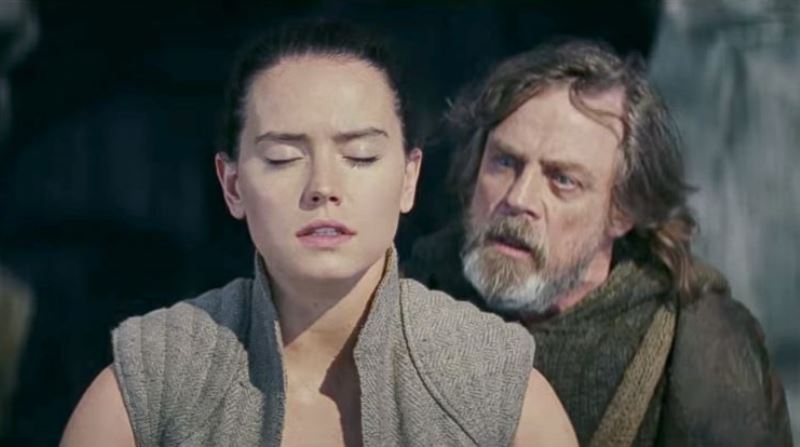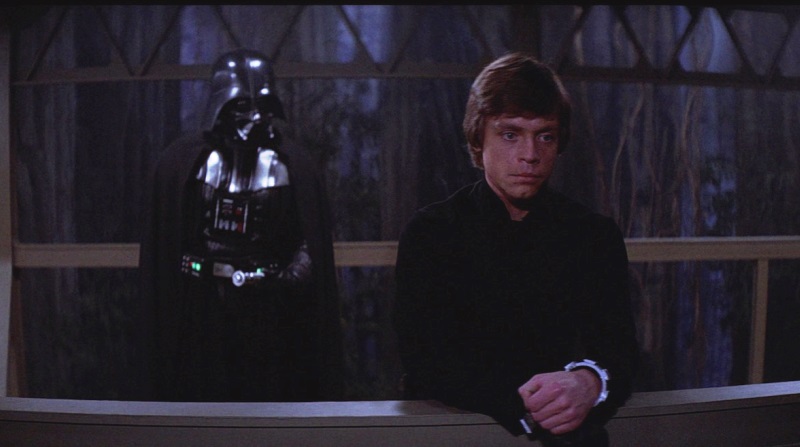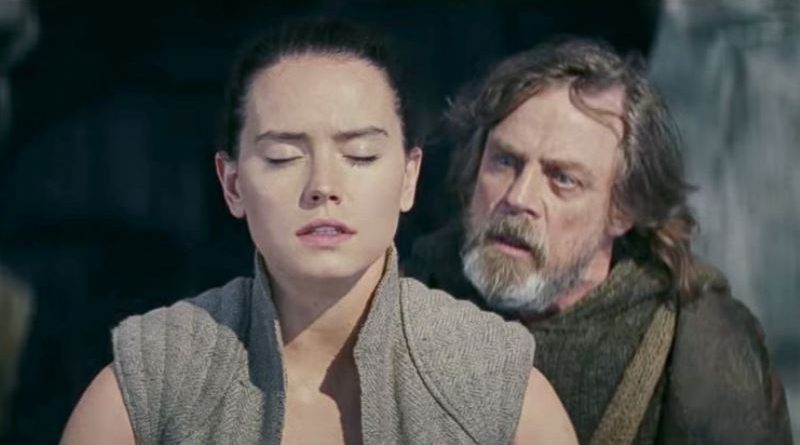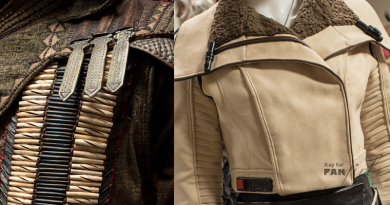How The Last Jedi Moved Star Wars Forward By Reflecting the Past
 The Force Awakens’ homage to A New Hope re-established Star Wars on a cinematic scale, deftly playing against expectations while touching upon themes grounded in the original work that launched the franchise. The Last Jedi continued this process of breaking away from the original trilogy and simultaneously establishing the sequel trilogy as something unto itself by addressing both The Empire Strikes Back and Return of the Jedi. It did so by pulling thematic elements and events designed with characterization in mind from both films, thus clearing the film landscape for J.J. Abrams’ Episode IX.
The Force Awakens’ homage to A New Hope re-established Star Wars on a cinematic scale, deftly playing against expectations while touching upon themes grounded in the original work that launched the franchise. The Last Jedi continued this process of breaking away from the original trilogy and simultaneously establishing the sequel trilogy as something unto itself by addressing both The Empire Strikes Back and Return of the Jedi. It did so by pulling thematic elements and events designed with characterization in mind from both films, thus clearing the film landscape for J.J. Abrams’ Episode IX.
There were always going to be similarities to The Empire Strikes Back in The Last Jedi, courtesy of the story developed in The Force Awakens, such as the potential of an inexperienced Force-user seeking out a Jedi Master for training on a remote planet and a vengeful Empire-like enemy desiring revenge upon a rebellious force for an oversized victory against its superweapon. Indeed, the film opens similarly, with the First Order appearing out of hyperspace to catch the Resistance in the act of fleeing its base. Like the Empire before it, the First Order spends the entirety of the film chasing after Leia Organa – though its motivations are not driven by the singular desire of Darth Vader to find Luke Skywalker. Both films also focus on defeat for both sides: the Rebellion does not win in Empire and the Resistance’s escape at the end of Last Jedi is signified not by victory over the First Order, but in avoiding complete annihilation. Given the Resistance began as four cruisers fleeing D’Qar and ends with the survivors all fitting aboard the Millennium Falcon, the victory really belongs to the First Order.
The story breakdown of The Last Jedi can be viewed as having three components: 1) Rey on Ahch-To with Luke, 2) Rose and Finn on their mission, including Canto Bight, and 3) Poe’s confrontation with Vice Admiral Holdo aboard the Raddus. Within each of the three arcs are more sophisticated elements, as they serve as vehicles for what Rian Johnson has set out to convey in his film, a play on themes and the importance of characterization.

Rey’s story arguably is the most important due to its eventual impact on the events later in the film. We are offered the initial comparison of Luke on Dagobah, a potential Jedi sent to find a hidden Master. In Empire, Yoda only initially refuses to train Luke, and his introduction is similarly comedic at first as Luke’s is in Last Jedi. Yet Yoda quickly concedes, whereas Luke only eventually does so in order to educate Rey on why the ways of the Jedi must end – the opposite purpose of Yoda’s teaching to Luke, to train him as a Jedi to continue the Jedi Order. Rey’s training was never intended to establish her as a Jedi.
Rey’s story on Ahch-To picks up and follows Luke’s own interactions with Darth Vader, which begins in Empire and concludes in Jedi. When Luke Skywalker confronts Darth Vader at Cloud City, it is initially to save his friends. But by the conclusion of the face off, Luke connects telepathically with his father just before the Millennium Falcon leaps to hyperspace. This insight into Vader leads Luke in the second act of Jedi to tell Yoda and Obi-Wan Kenobi that his father can be saved, that he had felt the good in him. This goes against the advice of both Jedi Masters, who opine that Anakin Skywalker had been destroyed by Darth Vader. After a series of telepathic connections between Rey and Kylo Ren, Rey comes to the same determination and has her own moment of arguing with her teacher in the film. Like Kenobi, Luke warns her that Kylo is too far gone and cannot be saved. Like Luke, Rey ends up willingly surrendering herself over to the enemy purely for the opportunity to reach through in person to the individual she believes can be saved from the Dark Side.
Return of the Jedi offered a candid moment between Luke and Vader, shortly after his surrender, where Luke attempts to persuade his father to return to the light. Vader initially denies there’s any hope, and only when the Emperor has chosen to destroy Luke does Vader act on the good within him. Last Jedi hits these same beats, exchanging a walkway on Endor for an elevator, even going so far as to have Rey’s words echo Luke’s, referencing sensing a conflict within Kylo. Like Vader, Kylo rejects her words and delivers her over to his emperor, his Supreme Commander Snoke.

Thus, in the middle of the second film in the sequel trilogy, we are seeing the major arc from the third film of the original trilogy. In fact, up through the moment Snoke decides to end Rey’s life, the events mirror each other, right down to Snoke keeping the lightsaber of a Skywalker on his throne beside him. Snoke’s trusted dark side apprentice turns on him, killing him, and in the throne room fight that ensues it seems as if Kylo Ren has joined the side of the good, albeit in a much healthier state than Anakin Skywalker in Jedi.
This is the moment when Johnson breaks with expectations. At least for his film, Kylo Ren does not choose the side of good. He chooses to do what Vader had offered Luke in Empire and Jedi: depose their ruler and rule the galaxy together. Rey rejects this offer by Kylo, infuriating him, and setting the franchise on a new path not yet explored by the original trilogy.
A path that does bear similarity to one in The Empire Strikes Back is the side trip by Finn and Rose Tico to Cantonica and the city of Canto Bight, and it reflects one of Johnson’s biggest concerns: character. In Empire, Han and Leia spend the entire second act of the film in an asteroid field, a space slug, and being pursued by the Empire, and their story through these scenes contributes virtually nothing to the overarching plot of the film. On the other hand, those sequences contribute to the character of our heroes, specifically the romance between the smuggler and the princess. In short, an entire second act for the majority of the main characters is dedicated to developing character, and in this regard, the Canto Bight scenes through Finn’s confrontation with Captain Phasma serve the same purpose. For as much as the plan to find a slicer to board a First Order ship to deactivate the tracking unit utterly fails and does nothing to support the fleeing Resistance, it shoulders a significant weight concerning how Finn views not only his place in the Resistance, but the wider universe around him. It shifts his selfish perspective of leaving to find Rey to a moment later in the film when he is ready to sacrifice himself to save the Resistance from the First Order’s superlaser. It also provides us much insight into the newest hero to join the sequel trilogy, Rose, including understanding her motivations for her place in the Resistance and developing her relationship with Finn so she’s prepared to risk her life to save him.
The lesson of sacrifice to achieve a goal is also one that becomes prominent to Poe Dameron’s arc, which, while situated almost entirely aboard the Raddus, holds the same virtue as the scenes set on the Millennium Falcon in Empire. Poe’s story arc is likewise built to develop his character, signified right at the beginning of the film after his chastisement and demotion by General Leia. The journey Poe takes in Last Jedi is to learn to appreciate the bigger picture, one that Luke only learns through his failure by leaving Dagobah early to attempt to save his friends on Cloud City. Poe’s mentors are Leia and Holdo, something Poe only truly recognizes by the end of the film, but something that is established by the women’s figurative comparison of notes on his behavior near the conclusion of the film. Unlike Luke, who was warned his training was incomplete, Poe’s character arc delivers him into a place of understanding and evolution revealed by his leadership during the Battle of Crait and subsequent escape to the Falcon. Specifically, his appreciation that self-sacrifice is not always the necessary choice, the difference between a narrow focus and a larger one.
With regard to self-sacrifice, Luke becomes Darth Vader, accepting responsibility for his failures by taking an action for the purpose of saving others that ultimately will lead to his death. The Jedi Master whom Rey finds on Ahch-To has fallen, not to the dark side, but to self-pity and despair that he can trust himself to do anything worthwhile to benefit the galaxy. Cutting himself off from the Force is the equivalent to ceasing to be his former self. Only after Rey finally encourages him to reconnect, similarly to Vader reconnecting with the good within, does Luke not only return to who he was inwardly and outwardly, mirroring Anakin’s Force Ghost appearance at the end of Jedi. It is as much a redemption of his character as Vader’s redemption at the end of the original trilogy – a theme that became the central focus for that film.
Throughout The Last Jedi, Rian Johnson deftly weaved themes and homages to not just The Empire Strikes Back, but also to Return of the Jedi. In writing the script for the film, Johnson described part of the process as figuring out that point at which something he loved should be continued and when to break away from it. Structurally he relied upon Empire, choosing to write scenes that plot-wise actually contributed little to the events occurring in the film but provided depth and characterization to our heroes and villains. Thematically he drew upon both the second and third films of the original trilogy, touching upon the ideas of redemption and an individual’s place in a wider world – all the while playing against the expectations those themes carried with them from Empire and Jedi. More so than The Force Awakens, Johnson ushered the franchise into a position to be free of the original trilogy, freeing J.J. Abrams’ Episode IX from the need to reflect back on those stories, those heroes, and those myths. The Last Jedi is cinematic closure built on the past, but also one promising a new future to be explored.
- Star Wars The Mandalorian – The Reckoning and Redemption Review - January 15, 2020
- Star Wars: The Mandalorian –The Prisoner Review - January 11, 2020
- Star Wars Resistance – Station to Station Review - January 7, 2020











